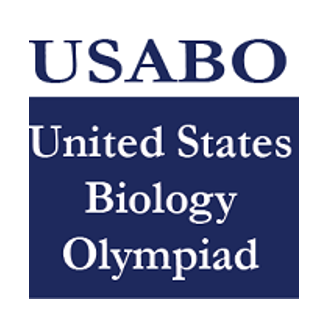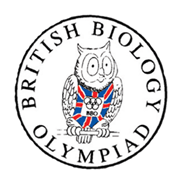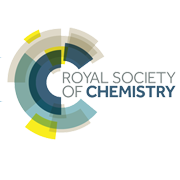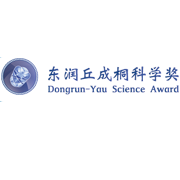- 翰林提供学术活动、国际课程、科研项目一站式留学背景提升服务!
- 400 888 0080
翰林国际教育Alevel Chemistry化学辅导
Chemistry化学课程
化学课程的设置包含三大块面:物理化学、无机化学和有机化学,并对学生动手操作实验的能力有一定要求。英国高中阶段的化学课程对学生的学科理解有一定挑战,主要的难点包括但不仅限于背诵内容多、语言要求高、有机化学不入门以及实验操作困难,不会写结论。
实际上所有的难点在化学这门课可以总结为两个原因:一、学习过程中知识体系建立有疏漏,根基不扎实;二、学习方法不正确导致迟迟不能入门。只要从一开始选对方法,化学的学习会比其他学科更加充满乐趣。化学专业除了是申请化学、生物、医药类专业必修课之外,也是所有理工科类专业非常看重的一门成绩。
翰林国际教育 Chemistry Syllabus化学大纲免费下载
Cambridge International Education(CIE)考试局:
CIE Chemistry(9701) syllabus 2019-2021
AQA Education(AQA)考试局:
AQA AS(7404) and (7405) Chemistry Specifications for first teaching in 2015
Pearson qualifications | Edexcel考试局:
Edexcel Alevel Chemistry Specifications(XCH11,YCH11) for first teaching in 2018(International only) Edexcel Alevel Chemistry Specifications(XCH01,YCH01) for first teaching in 2013(International only) Edexcel Chemistry Specifications(9CH0) for first teaching in 2015
Chemistry化学课本
Chemistry化学真题
翰林国际教育 Chemistry化学辅导大纲
| Topic | Subtopics | Hours* | Homework |
| Atoms, molecules and stoichiometry | Relative masses of atoms and molecules | ||
| The mole and the Avogadro constant | |||
| The determination of relative atomic masses, Ar | |||
| The calculation of empirical and molecular formulae | |||
| Reacting masses and volumes (of solutions and gases) | |||
| Atomic structure | Particles in the atom | ||
| The nucleus of the atom | |||
| Electrons: energy levels, atomic orbitals, ionisation energy, electron affinity | |||
| Chemical bonding | Ionic bonding | ||
| Covalent bonding and co-ordinate (dative covalent) bonding including shapes of simple | |||
| Intermolecular forces, electronegativity and bond properties | |||
| Metallic bonding | |||
| Bonding and physical properties | |||
| States of matter | The gaseous state: ideal and real gases and pV = nRT | ||
| The liquid state | |||
| The solid state:lattice structures | |||
| Chemical energetics | Enthalpy change, ΔH | ||
| Hess’ Law, including Born-Haber cycles | |||
| Entropy change, ΔS ⦵ | |||
| Gibbs free energy change, ΔG ⦵ | |||
| Electrochemistry | Redox processes: electron transfer and changes in oxidation number (oxidation state) | ||
| Electrolysis | |||
| Standard electrode potentials E⦵: standard cell potentials Ecell and the Nernst equation | |||
| batteries and fuel cells | |||
| Equilibria | Chemical equilibria: reversible reactions; dynamic equilibrium | ||
| Ionic equilibria | |||
| Partition coefficients | |||
| Reaction kinetics | Simple rate equations; orders of reaction; rate constants | ||
| Effect of temperature on reaction rates and rate constants; the concept of activation energy | |||
| Homogeneous and heterogeneous catalysts including enzymes | |||
| The Periodic Table: chemical periodicity | Periodicity of physical properties of the elements in the third period | ||
| Periodicity of chemical properties of the elements in the third period | |||
| Chemical periodicity of other elements | |||
| Group 2 | Similarities and trends in the properties of the Group 2 metals, magnesium to barium, and their compounds | ||
| Some uses of Group 2 compounds | |||
| Group 17 | Physical properties of the Group 17 elements | ||
| The chemical properties of the elements and their hydrides | |||
| Some reactions of the halide ions | |||
| The reactions of chlorine with aqueous sodium hydroxide | |||
| Some important uses of the halogens and of halogen compounds | |||
| An introduction to the chemistry of transition elements | General physical properties of the first set of transition elements, titanium to copper | ||
| General characteristic chemical properties of the first set of transition elements, titanium to copper | |||
| Colour of complexes | |||
| Stereoisomerism in transition element complexes | |||
| Stability constants, Kstab | |||
| Nitrogen and sulfur | Nitrogen | ||
| Sulfur: the formation of atmospheric sulfur dioxide, its role in acid rain | |||
| An introduction to organic chemistry | Formulae, functional groups and the naming of organic compounds | ||
| Characteristic organic reactions | |||
| Shapes of organic molecules; σ and π bonds | |||
| Isomerism: structural and stereoisomerism | |||
| Hydrocarbons | Alkanes | ||
| Alkenes | |||
| Hydrocarbons as fuels | |||
| Arenes | |||
| Halogen derivatives | Halogenoalkanes and halogenoarenes | ||
| Relative strength of the C-Hal bond | |||
| Hydroxy compounds | Alcohols | ||
| Phenol | |||
| Carbonyl compounds | Aldehydes and ketones | ||
| Carboxylic acids and derivatives | Carboxylic acids | ||
| Acyl chlorides | |||
| Esters | |||
| Nitrogen compounds | Primary amines | ||
| Amides | |||
| Amino acids | |||
| Polymerisation | Condensation polymerisation | ||
| Predicting the type of polymerisation | |||
| Properties of polymers | |||
| Degradable polymers | |||
| Analytical techniques | Chromatography | ||
| Infra-red spectroscopy | |||
| Mass spectrometry | |||
| Carbon-13 NMR spectroscopy | |||
| Proton (1H) NMR spectroscopy | |||
| Organic synthesis | Synthesis of chiral drug molecules | ||
| Synthetic routes | |||
| Total |
*计划课时仅供学霸级学员参考,实际用时依学员具体情况会有调整。
Chemistry化学国际学术活动
国际课程+国际学术活动更具竞争力
USABO/BIO USACN 每年4月
难 度: 含金量: USA Biology Olympiad,美国生物奥林匹克,Center for Excellence in Education举办,2017年进入中国,已经吸引每年上千名中国学生参赛
USNCO 每年3月预赛
难 度: 含金量: US National Chemistry Olympiad,美国化学奥林匹克,由美国化学会举办,美籍或绿卡学生参加,每年3月各地选拔赛,6月夏令营集训,为七月的IchO做准备
BBO 每年4月
难 度: 含金量: 英国皇家生物学会举办的全英生物奥赛,已经登录中国八十多所学校。2017年参赛人数近8000人,比赛形式为笔试。
UKChO 每年1月
难 度: 含金量: 皇家化学学会举办的英国顶级水平的高中化学学术活动,纯笔试形式,个人赛。
Toronto Bio 每年4月
难 度: 含金量: University of Toronto National Biology Competition多伦多大学举办的生物学术活动,是CBO选举加拿大生物奥赛除实验技能外理论知识的唯一选拔标准,专为加拿大推举可以参与IBO国际生物奥赛的优秀学生,优异者有机会获得多大奖学金
丘成桐化学奖 每年9月-12月
难 度: 含金量: Yau Science Awards (Chemistry),每年一届,研究报告的形式参赛。旨在发现有前途的全球华人年轻科学天才。

早鸟钜惠!翰林2025暑期班课上线

最新发布
© 2025. All Rights Reserved. 沪ICP备2023009024号-1














